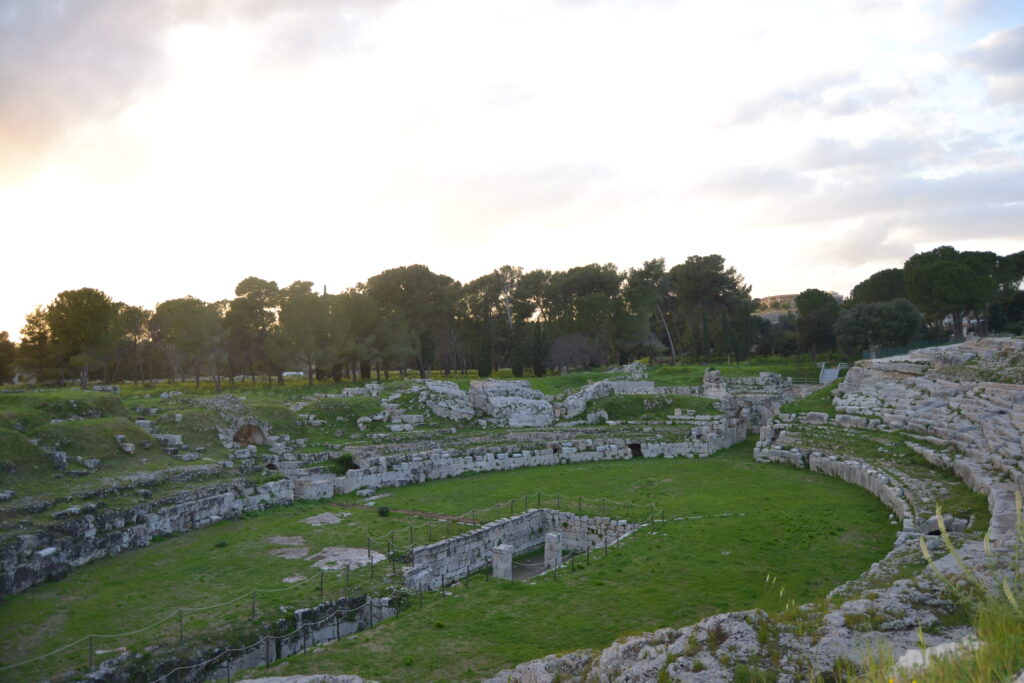ARCHEOLOGICAL PARK OF NEAPOLIS: here you will be immersed in ancient Greek and Roman history. The park includes:
The famous GREEK THEATRE which was seen by Eschylus, Epicarmus, Plato and Archimedes. It is one of the largest theatres of the Ancient world. It could hold up to 15,000 people and it was almost totally carved out of soft white limestone.
LATOMIA DEL PARADISO and DIONYSIOS’S EAR are among the most impressive ancient Greek quarries you can visit in Syracuse. Today they are found within beautiful gardens. The work of slaves created one of the most fascinating caves which later on, as legend goes, Caravaggio suggested was adapted to its acoustic peculiarity.
The ALTAR OF HIERON II which was dedicated to Zeus and was used for many rituals which included animal sacrifices.
The ROMAN AMPHITHEATRE, probably built during the age of the Emperor Augustus. The Amphitheatre testifies the Romans passion for public games. It will fill your imagination with the images of fighting gladiators.

THE CAPPUCINI’S STONE QUARRY.
Immersed in lush vegetation, the quarry reveals traces of centuries of human toil. Starting with the Greeks, it seems that slaves engaged in the back breaking work of cutting stone that continued for centuries.
The quarry is often associated with Thudices’s book of the “Pelopponesean War” since it was probably the prison for the several Atheneans who were captured during the war. Some “arcosoli” reveal a Christian influence. It was the Cappucini monks, who built the convent on top of the stone quarry, improved the water system and constructed the irrigation of the garden.